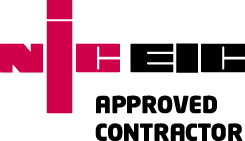

Table of Contents
Electrical safety in the workplace is an integral part of a healthy work environment and an important consideration for all employers.
According to the Health and Safety Executive (HSE), every year around 100 accidents involving electric shocks and burns are reported in the UK, out of which approximately 30 are fatal.
While some electrical injuries may result in loss of life, others are non-fatal but can cause permanent damage and severe injuries.
In addition to that, faulty electrical installations and appliances may lead to electrical fires, which are a serious hazard in any kind of property and can result in loss of life as well as property.
As an employer or owner of a business, it is your responsibility under the Electricity at Work Regulations to protect your employees, staff, clients, customers, and visitors from such safety hazards.
If you are found not taking the required safety measures, you may be held liable in case of an accident, injury, or death.
Read on to find out the common electrical hazards in the workplace, the legal requirements for the Electricity at Work Regulations, and the safety measures you can take to minimise electrical risks:
With workplaces so heavily dependent on electricity to power their day-to-day operations, from lighting up the property to using heavy machinery, it is very important to make sure all the electrical wiring and installations are in top-notch condition.
Electrical installations tend to deteriorate over time and, depending on how often they are used and how, they may show signs of early wear and tear and may require regular upkeep and maintenance.
The inability of the owners and employers to keep their electrical installations in a safe working condition could put their employees at risk of burns, electrical shocks, and electrocution, all of which may even prove to be fatal in serious cases.
The people most at risk of electrical-related injuries include the maintenance staff and those working with electrical equipment and machinery and in hazardous environments such as in construction and agricultural sites. Other at-risk environments include wet, harsh, or confined conditions and near overhead electrical lines.
The most common causes of these injuries include:
That being said, it is very important to ensure that all the existing electrical installations are adequately maintained and that any new installations are carried out by a competent electrician who possesses the necessary skills and training for the job.
It is also very important that your employees and staff are aware of all the potential electrical risks at the workplace and understand how to deal with some common issues that may arise.
The Electricity at Work Regulations (1989) are based on the rules regarding electrical safety in the Health and Safety at Work Act 1974 and apply to all aspects of the use of electricity within the workplace.
They place responsibility on the employers to make sure that all work being carried out on the premises, which may use or be affected by electricity, is done safely and all foreseeable dangers and risks are prevented.
The regulations are not only to prevent electrical shocks during work but also take into account the installation of electrical systems and appliances according to the safety standards set by the law.
According to the regulations, the responsible individuals must:
The Electricity at Work Regulations exist for the sole purpose of preventing injuries or death caused by electrical hazards while in the workplace. These hazards may include electric shocks, burns, or electric fires or explosions caused due to electrical faults.
The Electricity at Work Regulations apply to all employers and self-employed individuals in the workplace, along with the employees who must do their best in cooperating with their employers to make the workplace a safe place for themselves and others.
These regulations cover the following areas:
As an employer or business owner, you have a legal responsibility under the Electricity at Work Regulations 1989 to protect your employees from all kinds of safety and security threats, including those arising from faulty electrical wiring and installations.
The best way to make sure that the electrical system on your property is safe for use is to have it regularly checked and inspected by a certified and professional electrician with the relevant skills, expertise, and equipment to carry out the entire process.
Commercial electrical testing and inspection, also called periodic electrical inspection, is carried out in accordance with the BS 7671 wiring regulations and refers to a detailed check-up of the electrical systems on your property and will indicate whether your electrical installations are safe and compliant with the law.
Periodic electrical inspections aim to:
They constitute visual inspections, detailed inspections, and portable appliance testing (PAT), all of which give you a detailed report of the health of your electrical wiring and installations.
Visual inspections look for any visual signs of damage and deterioration, at the end of which a Visual Inspection Report (VIR) is made.
They include looking for damages to any part of the plug, fuses, and wires connected incorrectly, exposed wiring, and discolouration of any sockets, and must be done every 6 to 12 months.
Detailed inspections refer to the detailed routine check-up of the electrical systems in a property and are carried out by certified and professional electricians using high-quality equipment throughout the process to detect faults and minimise electricity-related hazards.
They are done to identify any damages, defects, or deterioration that may have been missed in the initial checks and are typically conducted every 3 to 5 years.
The purpose of a detailed inspection is to determine whether the current electrical installations are satisfactory for continued use or not, at the end of which an EICR (Electrical Installation Condition Report) is made.
An EICR provides a detailed summary of the conditions of the electrical systems and whether they comply with the current British Standards BS 7671 for electrical safety.
In addition to recording several observations, an EICR also makes recommendations where improvements may be required for safety.
Portable Appliance Testing (PAT) is a routine inspection to test items that are not part of the fixed wiring and do not fall under the electrical testing of the premises.
Electrical appliances that have a cable and plug, can be disconnected from their power source, and can be easily moved all fall under this category.
Some common portable appliances include desktops, laptops, printers, photocopiers, refrigerators, microwaves, toasters, portable heaters, table lamps, phone chargers, and extension cords.
PAT testing is also carried out by a professional electrician at least once a year, depending on the age of the equipment, how often it is used, whether it might have been misused, or if it has been altered or repaired in the past.
According to BS 7671, periodic electrical inspection and testing must be carried out by a skilled person who possesses the right knowledge and experience to perceive the risks and avoid hazards.
The competent individual must have a formal qualification and must know how to operate electrical instruments to carry out the tests.
To ensure that all your electrical work meets the current regulations and you receive a certificate of compliance, you must choose a registered electrician to do it for you.
A competent electrician will not only carry out the work as per the UK regulations but will also hold liability for any damages or unexpected incidents happening during the inspection.
When it comes to electrical safety in the workplace, there are a few basic safety precautions that must be taken into account.
It is very important to not only maintain your electrical wirings and installations but also train your employees on how to use them (and how not to use them).
All the employees must be trained to conduct regular user checks where they look for obvious visual signs such as damages to the cables, plugs, and wall outlets, burn marks on the equipment, plugs, and sockets, trapped, knotted, or frayed cables, and water damage to the equipment.
Here are a few safety precautions to follow for electrical safety in the workplace:
If you are looking for a registered electrician for the installation, maintenance, and inspection of your property’s electrical system, look no further.
We offer a wide range of services to meet the demands of our clients which include all aspects of domestic, commercial, and industrial installations, along with testing services for all kinds of properties.
All our work is fully insured and we work to meet the standards set to us by the NICEIC to make sure all your electrical installations meet the current regulations and all the notifiable work is signed off by the local authorities.
If you have unplanned issues within your home or business, we can provide a call out service to rectify and solve any problems. Anything from circuits tripping, loss of power, broken items that need repairing, or to check if you feel something is unsafe or a potential hazard.
Our team can generate a Visual Inspection Report (VIR) to identify anything visual that does not comply with the standards or looks unsafe, as well as a full Electrical Installation Condition Report (EICR) where we will identify and test each circuit to make sure they are not deteriorating and are safe for use.
We can also provide PAT testing of appliances to make sure that any items such as kettles, computers, and microwaves are safe for use in the home and workplace.
We have been undertaking electrical work since 1976 and are specialists in all aspects of electrical work. Our services include:
Contact us here or call us on 0800 612 3001 to make sure your electrical installations are safe and compliant with the Electricity at Work Regulations.
Or would like us to provide a survey and quote then please contact us and we will be happy to help.
Call us on 0800 612 3001

